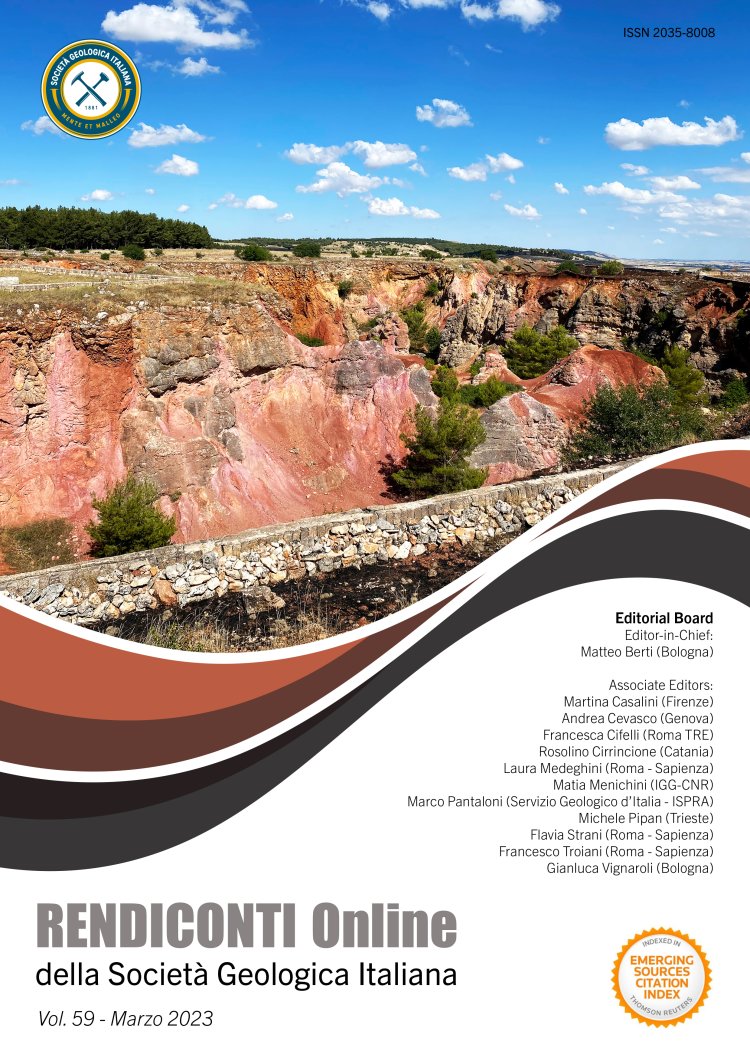
The Early Cretaceous C-isotope record of shallow-marine carbonates: a transect across southern Alps, Apennines and Dinarides
Sabrina Amodio1, Filippo Barattolo2 & Mariano Parente2
1Dipartimento di Scienze e Tecnologie, Università degli Studi di Napoli Parthenope, Centro Direzionale, Isola C4, 80143 Napoli (Italy).
2Dipartimento di Scienze della Terra, dell'Ambiente e delle Risorse, Università degli Studi di Napoli Federico II, Complesso Universitario di Monte Sant'Angelo, Via Cinthia 21, 80126 Napoli (Italy).
Corresponding author e-mail: sabrina.amodio@uniparthenope.it
Volume: 59/2023
Pages: 28-34
Abstract
Shallow-water carbonate platforms host a precious record of carbonate- associated proxies of palaeoceanographic conditions. The Apennine section of San Lorenzello, Valanginian–Barremian in age, exhibits interesting variations of geochemical, palaeontological and sedimentological proxies in the time interval after the Weissert and before the Selli OAEs. The C-isotope correlation, performed across a transect going from the Urgonian platform in the Subalpine Chains to the Apennine Carbonate Platform in the southern Apennines and to the Adriatic Platform in the Dinarides shows that the δ13C profile of the studied section potentially preserves the global marine C-isotope signature, but the above carbonate platforms show lateral thickness variations of time equivalent discrete stratal intervals and a not strictly synchronous distribution of some biomarkers. Biostratigraphy, carbon isotopes and sequence stratigraphy allow a chronostratigraphic calibration of the studied section and the interpretation of its depositional sequences (superbundles) and biotic events in the framework of global sequences and eustatic cycles. A recovery of the neritic biota is observed at the end of the Weissert OAE, coinciding with the Valanginian–Hauterivian sea- level rise and with a return to warmer temperatures after the late Valanginian cooling. The superbundles, considered also as expression of 400-kyr orbital cycles, can contribute to create a floating orbital time scale which quantifies the durations of the Hauterivian and Barremian stages.
Keywords
platform carbonates, carbon-isotope stratigraphy, biotic events, sequence stratigraphy, eustatic oscillations.
Get Full Text